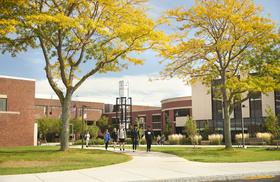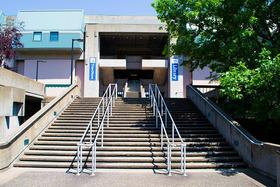COVID-19 has financially impacted colleges and universities across the nation in numerous ways. From forced housing refunds to declining enrollment and loss of revenue, many community colleges wonder what the 2020/21 semester will look like – if they have one.
In this article, we’ll explore the financial impact of COVID-19 on community colleges and what they are doing to make up for lost funds. We’ll also touch on predictions for enrollment in the 2020/21 school year and examine the data we’ve already collected regarding the impact of the pandemic on community colleges as well as their faculty and students.
How Have Budget Cuts Affected Community Colleges?
Though the novel coronavirus had already taken hold in numerous countries by then, the World Health Organization (WHO) didn’t announce COVID-19 as a global health crisis until March 11, 2020. Within weeks, thousands of businesses closed their doors, and millions of college students were sent home.
Schools nationwide scrambling to take their programs online were met with the additional challenge of unequal access to resources among their students. For thousands of students, the college experience was significantly altered, and not everyone took it in stride. Students sued several colleges for tuition refunds, and many colleges were forced to provide housing refunds, often over $1,500 per student.
Now that most colleges and universities have officially completed their 2019/20 school year, colleges are left wondering what the next will bring. Many schools find themselves facing budget shortfalls that will undoubtedly impact both staff and students. These shortfalls come not only from forced refunds and loss of revenue from commissions and fees, but some colleges spent as much as $13,000 on items related to COVID-19, including disinfectant, personal protection equipment, and new technology.
Not only are many schools facing loss of income from reduced enrollment and unexpected refunds, but some are facing additional financial challenges caused by cuts in state funding. Lakeland Community College, for example, will lose over $780,000 in state funding by the end of June 2020 and expects to lose over $4 million for the fiscal year ending in 2021. Similar cases can be found nationwide, and many community colleges have been forced to furlough and lay off faculty and staff.
Here are some of the additional cost-saving measures many schools are using:
- Hiring freezes except for revenue generation
- Reductions in nonessential operating costs
- Suspension of college-sponsored travel
- No purchases except for instructional items
- No salary increases except in the case of promotion
Though state funding contributes significantly to the budget for many community colleges, many schools still rely heavily on tuition. According to the Association of American Colleges & Universities, net tuition revenue in 2017 provided nearly half (about 46.4%) of all U.S. educational revenue for public colleges and universities. More than half of all states, for the first time, relied more on tuition than on educational appropriations.
What is the Value of Higher Education?
College tuition has risen dramatically over the past few decades, with some private universities charging over $30,000 to $50,000 per year. Community college is a much more affordable option, but what some students are paying for is the traditional college experience.
Scott Galloway, professor of marketing at the New York University Stern School of Business, suggests
There’s a recognition that education – the value, the price, the product – has fundamentally shifted. The value of education has been substantially degraded. There’s the education certification and then there’s the experience part of college. The experience part of it is down to zero, and the education part has been dramatically reduced.
Though there’s certainly nothing wrong with an online education, the quality and experience many college students currently have is drastically different from what they expected and, in many ways, what they paid for.
As more students and parents start to wonder whether it’s worth thousands of dollars to take classes via Zoom, more are considering taking a gap year. Many are opting to take courses online at their local community college versus paying an exorbitant price to attend the same online class through a traditional college or university. For some, however, the downtick in enrollment means they may get into a better school. Many schools have seen a 10% to 30% decrease in deposits and registrations, which forces them to start drawing from the waiting list to fill those slots.
Some experts suggest that in the years following the pandemic, we will see significant changes in the world of higher education. The top 50 universities will likely weather the storm and may find ways to adapt, primarily through technology, to come back stronger than ever. Galloway predicts that many colleges and universities will partner with companies to expand, and he envisions a partnership between MIT and Google or between Microsoft and Berkeley.
Experts like Galloway fear traditional college and university campuses will, in the future, cater mainly to the wealthy. The shift toward online education will open up opportunities for millions who might not otherwise have access to higher education, but the on-campus experience may be forever changed.
How Is Enrollment Likely to Change?
The modern world hasn’t experienced anything quite like the coronavirus pandemic in recent history, but the United States, at least, is not unfamiliar with recession. Experts suggest the Great Recession (2007-2009) might provide helpful insight into how COVID-19 will likely impact specific industries and the 2020/21 school year.
During the Great Recession, community colleges experienced significant changes in enrollment, which might give clues as to what to expect in the coming year. According to IPEDS data on enrollment trends, enrollment by older students spiked at community colleges early in the recession. Once the economy started improving, however, many of those students returned to the labor force. This seems to be pretty characteristic of recessions in general – unemployed workers return to school to train themselves to get a better job when the economy recovers.
The critical difference is that the magnitude of unemployment during the pandemic is already significantly more significant than it was during the Great Recession. This leads experts to predict an increase in community college enrollment by unemployed adults.
Though recessions are often correlated with an increase in community college enrollment, it’s worth noting that adult enrollment has declined to its lowest levels in the past two decades. A strong labor force is one explanation, but it has also become increasingly difficult for low-wage workers to find the time and resources needed to return to school. After COVID-19, some wonder whether adult students will come rushing back. Community colleges may need to tailor their programs to ensure stable employment for adult students once the economy starts to recover.
How Community Colleges Can Help Rebuild America
Amidst the challenges caused by budget cuts, some experts suggest that community colleges might play a key role in helping the nation recover from COVID-19. Debra Bragg, blogger for New America, suggests that President Obama’s Trade Adjustment Act Community College Career Training (TAACCCT) grant program may have put community colleges in a unique position to help some of the populations hardest hit by COVID-19 start to recover during the ongoing recession.
The Trade Adjustment Act Community College Career Training (TAACCCT) grant program was designed to help workers and other adults attend publicly funded community colleges to learn skills that lead to employment. Fields of study include programs in manufacturing, healthcare, energy, information technology, and more. Programs were developed in alignment with local and regional business needs. Over 250 grants were dispersed over four years, totaling $1.9 billion and impacting about 60% of the nation’s publicly funded community colleges.
The TAACCCT provided funding for training programs in the industries hit hardest by the Great Recession – the same industries now struggling in the wake of the COVID-19 pandemic. A meta-analysis of program data conducted by CESNA reveals that TAACCCT participants were twice as likely to finish programs and earn credentials and nearly 30% more likely to obtain a job or increase wages.
As the nation continues to respond to the COVID-19 crisis, community colleges are at ready to train nurses, respiratory therapists, radiological technicians, paramedics, and other frontline workers. They may also be able to apply programs and policies from TAACCCT to train employees in other sectors.
In this video, Harvard professor Robert B. Schwartz examines the importance of community colleges.
What Does the Fall Semester Look Like?
During the Great Recession, community college enrollment increased among young adults 18 to 24 years old. These numbers leveled off by 2011 and started to decline, while enrollment at 4-year institutions has continued to climb since 1997.
Though the Great Recession certainly impacted the education industry, COVID-19 has done more to disrupt the delivery of college education. More than ever before, students were forced to leave campus and continue their classes remotely. There is much speculation about whether online instruction will continue into the fall. If it does, some college-bound students may take courses at their local community college instead.
Experts suggest that increased enrollment at community colleges will likely be temporary, as they were during the Great Recession. There is, however, an opportunity for community colleges to solidify their role in providing an affordable route to a bachelor’s degree and to trade certifications. The key to capitalizing on this opportunity lies in creating seamless transfer pathways. Having established transfer programs may enable community colleges to draw more students right out of high school.
Many community colleges have moved most of their classes online and may keep them there for the fall semester. Unfortunately, it isn’t realistic to move all classes online. Some materials for trades like welding and automotive technology simply can’t be covered online unless the students have access to the necessary equipment. In many cases, these classes have merely been canceled.
How Are Faculty Members Adjusting?
The COVID-19 pandemic has completely changed the college experience for thousands, even millions of students, but faculty are scrambling to maintain some sense of normalcy. With little to no notice, college faculty were forced to take online lessons. For many, it meant learning new technology and new modes of teaching.
Gaidi Faraj, dean of African Leadership University, said,
COVID-19 has forced all of us to reimagine how we deliver an engaging and holistic learning experience for students. While it presents its challenges, ti is also a massive opportunity to break out of old habits and create new, impactful, relevant modes of learning that take advantage of technology and this moment.
Some faculty struggle to teach effectively when they are used to interacting with students directly. Professors who teach in large lecture halls may not be affected to the same degree by having to teach in such a depersonalized way, but many agree that it hasn’t been the school year they were expecting.
In the future, some predict the college admissions process will become more complex. It will likely involve online tests and remote learning as well as changes to application requirements. Schools will have to continue to adjust to online teaching, which will be a more significant challenge for some than for others. A school or a professor’s ability to effectively teach online could impact retention rates and tuition revenue.
Faculty Fears of Deepening Inequities
For many students, community college provides an affordable opportunity to obtain advanced training or post-secondary education. It provides greater flexibility than most four-year colleges and universities, so community college appeals to non-traditional students.
What some faculty have come to fear, however, is that COVID-19’s upheaval of the education system may deepen the inequities that already plague the system.
Schools nationwide have been forced to take their programs online without notice. For some, the transition has been largely successful – especially in areas where online education already existed. In many communities, however, the pandemic has exacerbated challenges like unequal access to technology, mental health issues, food insecurity, and balancing school with work and family life. Though many have made the necessary adjustments to meet those challenges head-on, not every community college class can be moved online.
Community college students are more likely to be the first in their families to attend college. They are also more likely to be older adults, from a low-income family, or be members of a racial or ethnic minority.
The American Community College Association estimates that about 40% of students graduate. Even before the disruption caused by COVID-19, many community college students required a significant amount of support. Adult students who hold a full-time job or spend the majority of their time caring for a family don’t have the flexibility many traditional college students do – students whose primary responsibility is to go to college.
Mary Ellen Flannery, blogger for NEA Today, predicts, “unseen and feeling disconnected or overwhelmed, many community college students will likely disappear over the next few weeks.”
This video looks at the Community College Innovation Challenge.
Regardless of what happens in the coming weeks, community colleges will find themselves making a significant number of adjustments for the 2020 fall semester and likely into the spring. Flexibility and understanding will be very important for faculty and could very well make the difference between a student finishing the semester.
Community colleges have always played a vital role in the community. That role is just as crucial today as in the 1960s when the first community colleges opened their doors. Education is a powerful tool, and community college education may help provide the unemployed with the tools and training they need to get back to work.
Questions? Contact us on Facebook and Instagram. @communitycollegereview
#CommunityCollegeFuture #OnlineEducation #HigherEdBudgets #WorkforceDevelopment #PostPandemicEducation #communitycolleges















